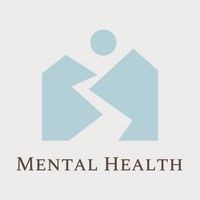In 2010, Autistics Speaking Day was a response to the then-upcoming first commemoration of Communication Shutdown. The annual Communication Shutdown event encourages non-autistics to refrain from using social networking websites for one day as a perspective-taking exercise,[116] while Autistics Speaking Day encourages autistic people to become more active on social media and to describe their experiences during a time when there are fewer neurotypical voices in the mix.
In 2012, autistic activist Zoe Gross organized the first Disability Day of Mourning vigil held in memory of people with disabilities murdered by family members or caregivers.[117][118][119] These vigils are now held annually on 1 March globally, often by local self-advocacy and disability rights groups.[119]
In 2015, autistic activist Alanna Rose Whitney created the social media campaign #WalkInRed, later rebranded #RedInstead to be more inclusive of wheelchair users, as another alternative to Light It Up Blue.[120][121]
Autism rights activists organize protests against organizations they consider objectionable, most notably Autism Speaks and the Judge Rotenberg Center.[122][123][124][125] In the United States, activists affiliated with ASAN have organized numerous protests against Autism Speaks events, typically protesting and leafleting at fundraising walks.[126] Autistic activists including Shain Neumeier and Lydia Brown have organized lobbying days and protests aiming to close or more strictly regulate the Judge Rotenberg Center.[127]
Terminology[edit]
Although some prefer to use the person-first terminology person with autism, most members of the autistic community prefer autistic person or autistic in formal English, to stress that autism is a part of their identity rather than a disease they have.[14] In addition, phrases like suffers from autism are objectionable to many people,[14][128][129] and are discouraged by prominent style guides.[130][131]
The autistic community has developed abbreviations for commonly used terms, such as:
Aspie – a person with Asperger syndrome. Not as frequently used with Aspergers being removed as an official diagnosis.[75]
Autie – an autistic person.[132]
Autistics and Cousins (AC) – a cover term including aspies, auties, and their "cousins", i.e. people with some autistic traits but no formal diagnosis.[133]
Curebie – a person with the desire to cure autism. This term is highly derogatory.[14]
Neurodiversity – appreciation of people regardless of neurological makeup. Neurodiversity is a natural variation within humanity, akin to biodiversity.[134][25]
Neurotypical (NT) – a person who does not have any neurological differences. Often used to describe an individual who is not on the autism spectrum.
Allistic – a person who is not autistic but may or may not be neurodivergent in other ways, for example, a dyslexic person, or someone with ADHD.[135][136] Originally and commonly, however, it is used satirically to describe those without autism.[137]
STISM – "the act of autistic people embracing who they are with confidence".[138] Coined by musical group 8 Chicken Nuggets.
Autism spectrum disorders; DSM-V; Diagnostic criteria-Diagnostic and Statistical Manual of Mental Disorders, Fifth Edition (DSM-5) is the 2013 update to the American Psychiatric Association's (APA) classification and diagnostic tool. In the United States, the DSM serves as a universal authority for psychiatric diagnosis.
Autistic pride[edit]
Further information: Autistic Pride Day
Autistic pride refers to pride in autism and shifting views of autism from "disease" to "difference". Autistic pride emphasizes the innate potential in all human phenotypic expressions and celebrates the diversity various neurological types express.
Autistic pride asserts that autistic people are not impaired or damaged; rather, they have a unique set of characteristics that provide them many rewards and challenges, not unlike their non-autistic peers.[75][139][140]
Curing autism is a controversial and politicized issue. The "autistic community" can be divided into several groups. Some seek a cure for autism—sometimes dubbed as pro-cure—while others consider a cure unnecessary or unethical,[14][75][76] or feel that autism conditions are not harmful or detrimental.[14] For example, it may be seen as an evolutionary adaptation to an ecological niche by some environmentalists[clarification needed] and the more radical autism rights campaigners.
Autistic culture and community[edit]
Duration: 6 minutes and 29 seconds.6:29
John Elder Robison talks about Be Different on Bookbits radio
With the recent increases in autism recognition and new approaches to educating and socializing autistics, an autistic culture has begun to develop. Autistic culture is based on a belief that autism is a unique way of being and not a disorder to be cured.[14] The Aspie world, as it is sometimes called, contains people with Asperger syndrome (AS) and high functioning autism (HFA), and can be linked to three historical trends: the emergence of AS and HFA as labels, the emergence of the disability rights movement, and the rise of the Internet. Autistic communities exist both online and offline; many people use these for support and communication with others like themselves, as the social limitations of autism sometimes make it difficult to make friends, to establish support within general society, and to construct an identity within society.[141]
Because many autistics find it easier to communicate online than in person, a large number of online resources are available.[139] Some autistic individuals learn sign language, participate in online chat rooms, discussion boards, and websites, or use communication devices at autism-community social events. The Internet helps bypass non-verbal cues and emotional sharing that autistics tend to have difficulty with.[21][142] It gives autistic individuals a way to communicate and form online communities.[143]
Conducting work, conversation and interviews online in chat rooms, rather than via phone calls or personal contact, helps level the playing field for many autistics.[92] A New York Times article said "the impact of the Internet on autistics may one day be compared in magnitude to the spread of sign language among the deaf" because it opens new opportunities for communication by filtering out "sensory overload that impedes communication among autistics."[21]



